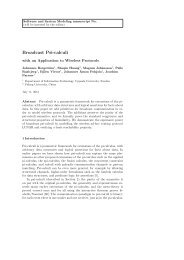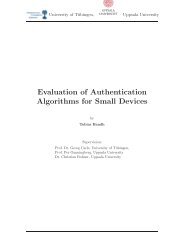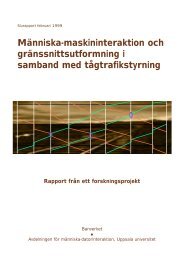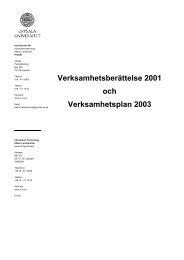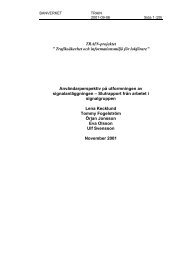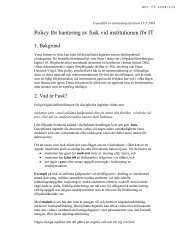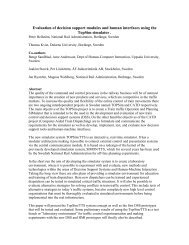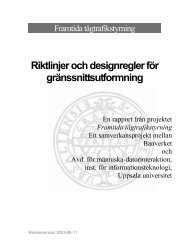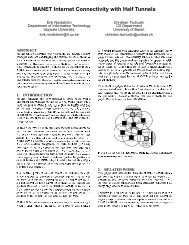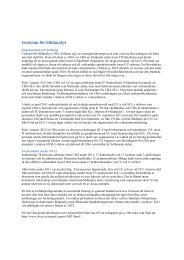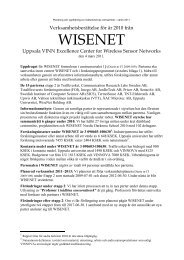Final Examination Data Communication and Networks ...
Final Examination Data Communication and Networks ...
Final Examination Data Communication and Networks ...
Create successful ePaper yourself
Turn your PDF publications into a flip-book with our unique Google optimized e-Paper software.
{12{<br />
B: (Topic Questions)<br />
Question 11<br />
Describe the OSI seven layer model. Name each of the layers in the model <strong>and</strong> draw<br />
a diagram that shows the ordering of these layers. Write a paragraph describing the<br />
areas of function that each layer is responsible for.<br />
Contrast the OSI model you have just described with the TCP/IP reference model.<br />
Using a diagram show the correspondence between relevant protocol layers in the two<br />
models.<br />
Discuss the relative merits of each of these models in the context of modern computer<br />
networking.<br />
[30]<br />
SOLUTION<br />
Presentation of the OSI diagram <strong>and</strong> list of the functions carried out in each layer.<br />
The contrast with the TCP/IP model should note the corespondence between the OSI <strong>and</strong><br />
TCP layers at the Network <strong>and</strong> Transport level. The discussion will also indicate that the<br />
Host to Network layer of TCP/IP corresponds pretty well to the <strong>Data</strong> Link <strong>and</strong> Physical<br />
layers of the OSI model. Session <strong>and</strong> Presentation layers are notpresent in TCP/IP, <strong>and</strong><br />
really are not needed as has been shown by experience over the last few years.<br />
A discussion of the merits of TCP/IP vs OSI as a reference model for networking. In terms<br />
of discussing relative merits students should touch on the following key ideas.<br />
[10]<br />
[8]<br />
Political inuence on the OSI model, thus the OSI protocol stack represents a design<br />
philosophy created bycommittee<br />
OSI failed to gain wide acceptance in the industry <strong>and</strong> consequently is largely of academic<br />
interest.<br />
OSI provides a much better model of layering <strong>and</strong> clearly denes <strong>and</strong> separates protocols,<br />
interfaces <strong>and</strong> services. This allows for greater exibility <strong>and</strong> allows the layers to be<br />
viewed <strong>and</strong> implemented independently of each other.<br />
TCP/IP describes a protocol,itisnotreally a st<strong>and</strong>ard.<br />
TCP/IP is in very wide use <strong>and</strong> is well understood.<br />
TCP/IP has proven very robust <strong>and</strong> well engineered.<br />
[12]<br />
OVER/



